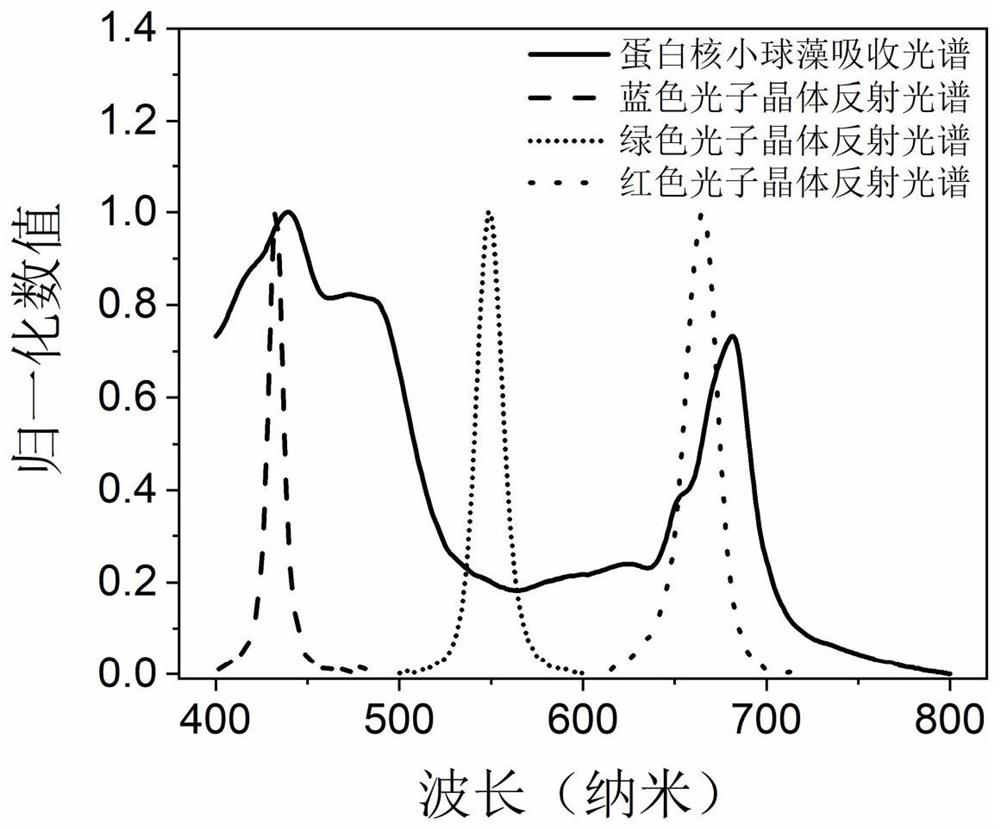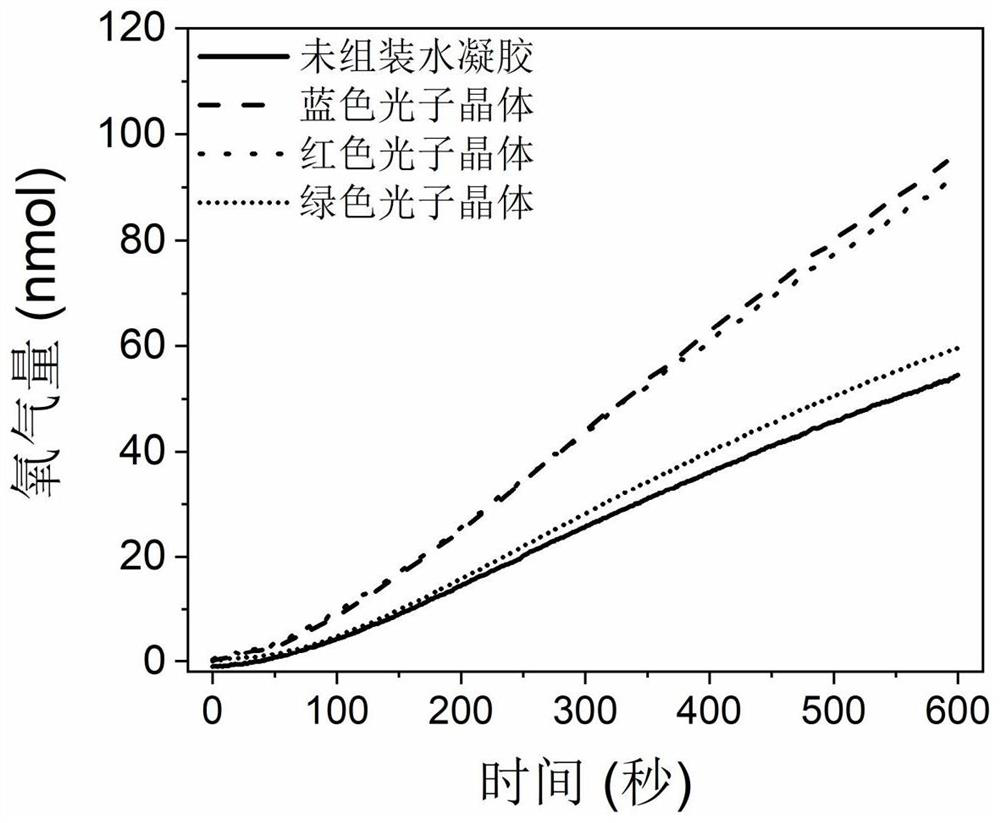Method for improving light energy utilization rate of photosynthetic pigment by utilizing slow photon effect of photonic crystal
A technology of photonic crystals and photosynthetic pigments, applied in the biological field, can solve problems such as hidden dangers of new gene biological safety and complex operation of methods, and achieve the effects of prolonging interaction time, improving photosynthetic efficiency, and enhancing absorption
- Summary
- Abstract
- Description
- Claims
- Application Information
AI Technical Summary
Problems solved by technology
Method used
Image
Examples
Embodiment 1
[0030] This example is used to illustrate the preparation of monodispersed polymethyl methacrylate-butyl acrylate nanoparticles:
[0031] Take 3 mL of methyl methacrylate, 3 mL of butyl acrylate, 0.2 g of acrylamide, 0.2 mL of acrylic acid, 50 μL of ethylene glycol dimethacrylate and 60 mL of ultrapure water and mix them in a 100 mL three-necked flask, stir, and in the case of passing nitrogen The temperature was raised to 90°C. Then, 4 mL of an aqueous solution containing 180 mg of ammonium persulfate and 5 mg of sodium styrene sulfonate was added. The reaction was carried out for 8 h, returned to room temperature, and the obtained nanoparticles were washed three times with ultrapure water. Finally, the nanoparticles were dispersed in 20 mL of ultrapure water.
Embodiment 2
[0033] This example is used to illustrate the preparation of photonic crystal hydrogels:
[0034] Using 1 mL of monodisperse polymethyl methacrylate-butyl acrylate nanoparticle aqueous solution (particle size: 125 nm) as colloidal particles, 50 μL of polyethylene glycol diacrylate as cross-linking agent and 10 μg of 2-hydroxy-4′-(2- Hydroxyethoxy)-2-methyl Propiophenone is a photosensitizer, mixed evenly, shaken until the aqueous solution exhibits a bright structural color, and then irradiated with a 365 nm ultraviolet light source for 3 minutes to prepare a photonic crystal hydrogel. Adjust the volume fraction of colloidal particles to adjust the photonic band gap of the prepared photonic crystal, that is, the reflection peak wavelength. Reflectance spectra and Chlorella pyrenoidosa UV-Vis absorption spectra such as figure 1 shown.
[0035] from figure 1 It can be seen that photonic crystal hydrogels with reflection peaks at 430 nm (blue), 550 nm (green) and 670 nm (red) w...
Embodiment 3
[0037] This example is used to illustrate the preparation of unassembled hydrogels:
[0038] Using 1 mL of monodisperse polymethyl methacrylate-butyl acrylate nanoparticle aqueous solution (particle size: 125 nm) as colloidal particles, 50 μL of polyethylene glycol diacrylate as cross-linking agent and 10 μg of 2-hydroxy-4′-(2- Hydroxyethoxy)-2-methyl Propiophenone is a photosensitizer, mix uniformly, and stir to make the solution appear white. Then, a 365 nm UV light source was irradiated for 3 minutes to form a hydrogel. The nanoparticles in this hydrogel are not assembled in an orderly manner, so they cannot exhibit structural color, which is used as a control for subsequent experiments.
PUM
 Login to View More
Login to View More Abstract
Description
Claims
Application Information
 Login to View More
Login to View More - R&D
- Intellectual Property
- Life Sciences
- Materials
- Tech Scout
- Unparalleled Data Quality
- Higher Quality Content
- 60% Fewer Hallucinations
Browse by: Latest US Patents, China's latest patents, Technical Efficacy Thesaurus, Application Domain, Technology Topic, Popular Technical Reports.
© 2025 PatSnap. All rights reserved.Legal|Privacy policy|Modern Slavery Act Transparency Statement|Sitemap|About US| Contact US: help@patsnap.com



